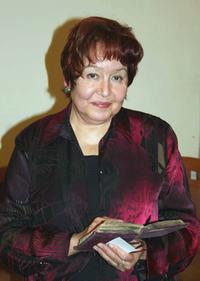
ALBINA KRUCHININA
Musicologist, PhD in Arts, Honored Worker of Art of RF, the founder of and Professor at the Chair of Old Russian Song Art of the N. Rimsky-Korsakov State Conservatory in Saint Petersburg, author of the study plan. She has received her PhD in 1979. Kruchinina is the author of a monograph, three textbooks on the prosody of hymnography and the Old Russian chant, about sixty articles, which were published in Austria, Ukraine, Finland, Armenia, Poland and Hungary, eight published volumes, as well as an author-decipherer of Old Russian chants. She has presented numerous papers at international conferences and congresses.
MUSICAL HIEROTOPY IN THE MEDIEVAL CULTURE: ZNAMENNY CHANT AND SACRED SPACES
This presentation is dedicated to the phenomenon of musical hierotopy, which is considered an important element in the medieval liturgical tradition. The term “hierotopy” was introduced into scholarly circulation by A. Lidov who suggested that a special practice existed in medieval art related to sacred spaces. Properly speaking, hierotopy was a medieval art of creating spatial images, the symbolism of which was strengthened by a liturgical context. These spatial images involved different components such as the interior space of the temple, icons, liturgical clothes, lighting effects, ritual actions, music, etc.
The analysis of recent research shows that the problem of the hierotopical significance of Old Russian church singing has not yet been presented in contemporary medieval studies. Our study is based on Russian notated manuscripts of the XVI-XVII centuries and intends to answer the following questions: What role did the artistic devices of ancient Russian monody have in creating the spatial images? What are the various levels of interaction between the musical and verbal structures of the znamenny chants? How can different nuances of musical intonation, rhythm, contrasts, and melodic resemblance participate in the formation of sacred spaces?
In this context it is interesting to consider some Old Russian chants in a certain aspect. One of the most significant parts of the interior space of temples is the tomb of a Saint. The richly decorated shrine of a venerated person, whether a hierarch (f. e. St. Peter of Moscow) or a monk, the founder of the monastery (as St. Kyrill Belojezerskyj or Sergyj of Radonezh) or even a holy fool (like St. Basil the Blessed), became a source of miracles, which were glorified in numerous texts in hymnography. The authors of this presentation demonstrate how znamenny chant, recorded in authentic medieval codices, was used by Russian ancient composers as an instrument of hermeneutics and at the same as an important device of Hierotopy.